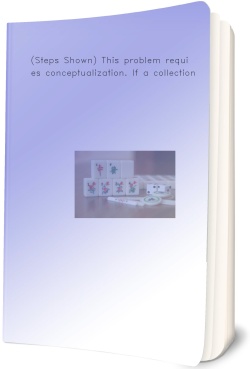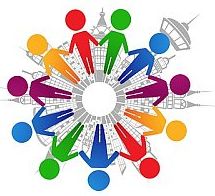M325 - Case Studies in Statistics You want to know if a new employee incentive program really works, so
M325 – Case Studies in Statistics
- You want to know if a new employee incentive program really works, so you set up a study.
a. What is your independent variable? (2 point)
b. What is your dependent variable? You will have to decide this – how could you measure whether an employee incentive program works? (Note that there are several ways to measure this – think up, or look up, a type of ratio variable you could use as a dependent variable). (3 points)
c. Decide whether you should use a research or a null hypothesis. Why did you choose this type of hypothesis? Choose carefully because the answer to a subsequent question depends on it! (4 points)
d. To set up a hypothesis testing procedure, what would be your comparison distribution and why? (3 points)
e. Decide on a probability to test your hypothesis. Why did you select this probability level? (2 points)
f. Given your hypothesis and your probability level, what would be your cut-off score? (2 points)
g. Outline the steps of your hypothesis testing procedure for this study. (5 points)
2. A school counselor was interested in the effect of a new program designed to reduce adjustment problems in newly transferred students. From her years of working at the school, she knew that the average score on a scale of adjustment difficulties for a transfer student was 58, with a standard deviation of 10. After the new program had been implemented, she tested 50 students and found their mean to be 52.
a. Would you use a one-tailed or two-tailed test for this research question? (Be careful; subsequent questions depend upon you figuring this out.) (2.5 points)
b. Estimate the variance and the standard deviation of the distribution of means for this problem (5 points)
c. Was this difference significant at the .01 level? Follow the steps of hypothesis testing completely when outlining your answer. (5 points)
d. Sketch the distributions involved (population normal curve, distribution of means, and sample, as in examples in your textbook). (2.5 points)
e. Figure the confidence limits for the 99% confidence interval for this problem (5 points)
f. Why is the distribution of means narrower than the normal curve? (2.5 points)
g. What is the effect of increasing the number of samples on the distribution of means? (2.5 points)
3. a. Say you have a null hypothesis that the mean height for Illinois State University men is 68 inches (Ho: m = 68). You go out, get a sample of 50 WSU men, measure each of them, and find that their mean height is 76 inches. You calculate your statistic (say z = 2.98) and compare it to a critical value (z = 1.96). You'd reject the null here and state that this sample is significantly taller than 68", or that this sample comes from a different population from which the null specifies. What type of error would you be making if the sample happens to be basketball players and why? (2.5 points)
b. Say you have a null hypothesis that the mean IQ for the general population is 100 ( u = 100). Say you sample 50 people who happen to be from MENSA, and their mean IQ is 120. You calculate your statistic (z = 1.88), and compare it to a critical value (z = 1.96). What type of error would you be committing if you fail to reject the null, and conclude that the MENSA population is not significantly different from the general population, when the mean IQ in the population of MENSA members is 140? Why? (2.5 points)
4. Define effect size and power. How are they related? (5 points)
5. It is known that a particular laboratory task takes the average person 2.5 seconds. A researcher was interested win whether older people are slower (take longer) on this task. The researcher tested 30 random selected 80 year-olds. Their mean time was 2.7 seconds, with an estimated population standard deviation of 1.4 seconds.
a. What is the standard deviation of the distribution of means for this sample? (2.5 points)
b. Why can’t you use the population standard deviation for this problem? (5 points)
c. Will you use a one-tailed or two-tailed test and why? (2.5 points)
d. Describe the 5-step hypothesis for this test in full, including a diagram of where the cutoff scores would be (5 points)
6. A counselor wants to find out whether there is a change (either an increase or decrease) in procrastination after attending his workshop.
- Is this a null hypothesis or a research hypothesis? (2 points)
-
Is this a directional or a nondirectional hypothesis? (3 points)
c. How are a and b related? (2 points)
d. What would be the cutoff score for this test if the counselor was testing 10 students? (1 point) – You can use a probability of either .05 or .01.
e. What is the name of the test you would use for the hypothesis? (1 point)
f. Provide a diagram of where the cutoff scores would be on the t-distribution, based on whether you think it should be a one-tailed or two tailed test and using the probability you chose in 4 (above) (5 points).
g. Go to http://gateway.ovid.com, CINAHL, and search for the study by Gloria Ann Jones Taylor on the effects of a culturally sensitive breast self-examination intervention.
a. Did the researcher expect a difference in breast-self examination (BSE) rate from time one to time 2? Is there an explicit hypothesis for this study? (2.5 points)
b. What were the interventions for treatment group I and treatment group II? (2.5 points) - What was the paired-t result for treatment group I? (2.5 points)
d. Given the df of 34 in this test, how many women were in treatment group I? (2.5 points)
e. Sketch the t-distribution for treatment group I, with a cutoff score for df=34, p.01, demonstrating why we should reject the null hypothesis that the BSE rate would not change after the intervention. (5 points)
f. What was the paired-t result for treatment group II? (2.5 points)
g. Given the df of 29 in this test, how many women were in treatment group II? (2.5 points)
h. Sketch the t-distribution for treatment group II, with a cutoff score for df=29, p.05, demonstrating why we should reject the null hypothesis that the BSE rate would not change after the intervention. (5 points)
Deliverable: Word Document


![[Solution Library] Statistics Problems : Please answer all questions [Solution Library] Statistics Problems : Please answer](/images/solutions/MC-solution-library-80420.jpg)
![[See Steps] firms for population study Select a random sample of [See Steps] firms for population study Select](/images/solutions/MC-solution-library-80421.jpg)
![[Steps Shown] You are operations manager for a plant that produces [Steps Shown] You are operations manager for](/images/solutions/MC-solution-library-80422.jpg)


